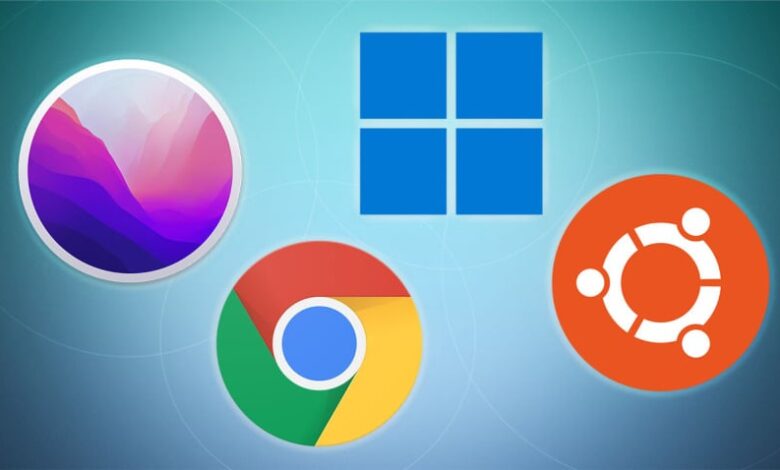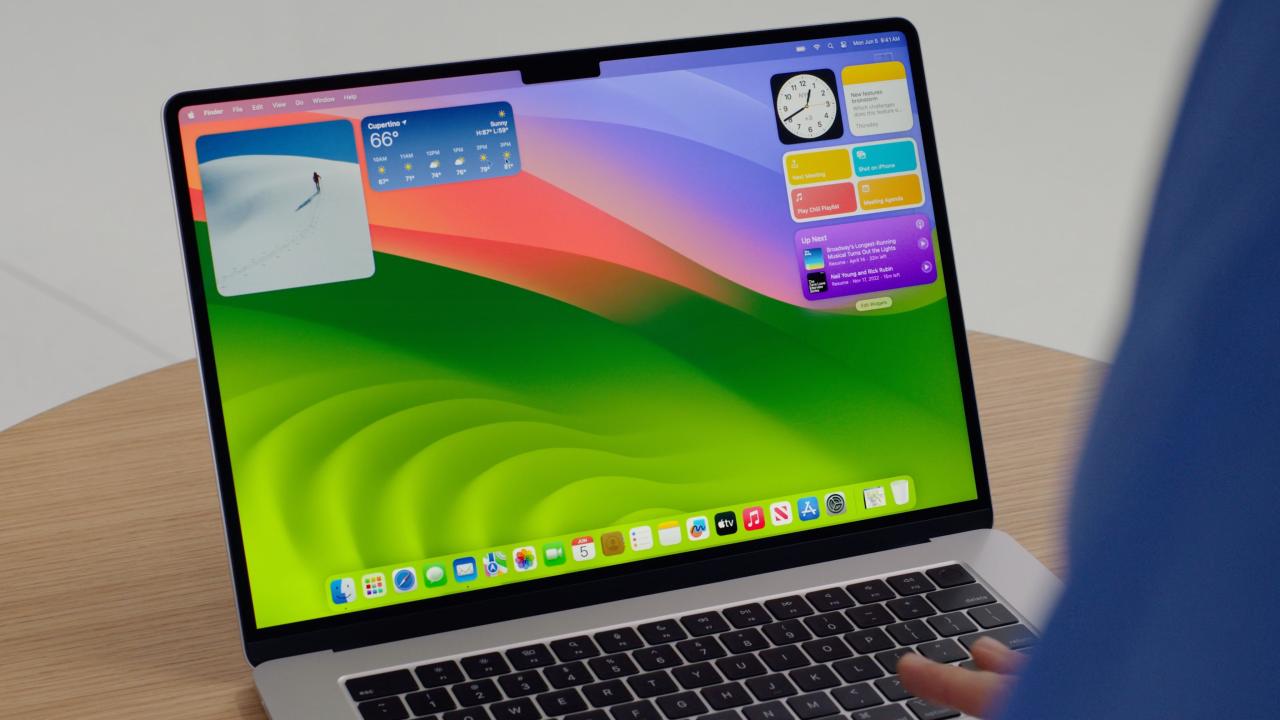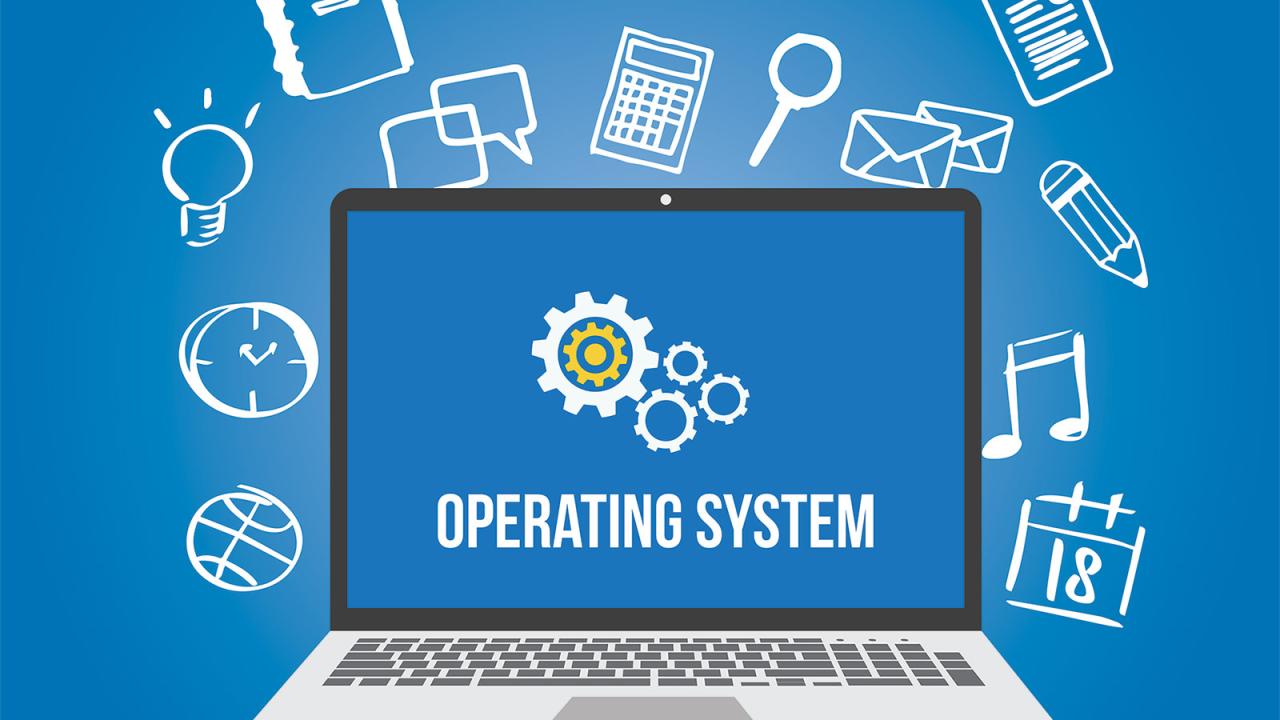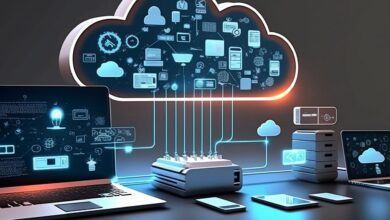Your Ultimate OS Guide: Windows, macOS, Android, iOS

The invisible yet immensely powerful layer of software that runs every modern device, from a pocket-sized smartphone to a professional desktop computer, is known as the Operating System (OS).
Without this fundamental software, your sleek gadget would be nothing more than a lifeless collection of metal, glass, and circuit boards, incapable of executing even the simplest command.
The OS is the digital maestro, the chief architect that manages all the computer hardware and software resources, acting as the crucial intermediary between you, the user, and the complex machinery inside your device.
Every tap, swipe, and click you make is translated by the OS into instructions for the central processing unit (CPU), memory, and storage, ensuring that multiple programs can run simultaneously without crashing into each other.
Navigating the digital world effectively requires more than just owning a device; it demands a deep, practical understanding of the OS that powers it, whether you are running a business on a powerful workstation, streaming videos on a laptop, or managing your entire life through a mobile phone.
We are currently living in a multi-platform universe dominated by four major players: Microsoft Windows and Apple macOS for desktop computing, and Google Androidand Apple iOS for the mobile sphere.
Each of these operating systems has its own unique philosophy, design, ecosystem, and set of features, offering distinct advantages and disadvantages depending on the user’s specific needs, priorities, and budget.
Choosing the right OS or, more commonly, mastering the ones you already use, is the key to unlocking maximum productivity, ensuring robust security, and ultimately, getting the best possible experience from your technology investment.
Understanding the core characteristics and user-friendly tips for each of these giants is essential for becoming a truly savvy and efficient digital citizen in today’s interconnected world.
This comprehensive guide will take a deep, friendly dive into the essential tips and nuanced differences of these four digital giants, ensuring you are equipped to get the very best performance and security from your hardware.
Deep Dive: Microsoft Windows (The Universal Workhorse)

Microsoft Windows reigns as the undisputed champion of the desktop world in terms of sheer market share and hardware variety.
Its vast ecosystem supports almost every piece of hardware and software ever created, making it the most versatile choice for a huge range of users, from dedicated gamers to corporate professionals.
The current generation of Windows, with its modern interface and seamless cloud integration, continues to evolve, constantly adding new features focused on multitasking and productivity.
Key Features and Productivity Tips
Windows has evolved significantly, moving from a basic graphical interface to a highly sophisticated and feature-rich environment.
A. Advanced Multitasking Tools
The operating system offers robust features designed to help users manage multiple applications at once.
A. Snap Layouts let you instantly arrange several windows into predefined, efficient grids on your screen.
B. Snap Groups remember those window arrangements so you can switch back to them with a single click from the taskbar.
C. Virtual Desktops allow you to create separate workspaces for different tasks, like one for work and another for personal projects.
D. Docking features automatically minimize external display windows when you undock your laptop and restore them when you reconnect.
B. Integration with AI and Cloud Services
Microsoft is rapidly integrating Artificial Intelligence (AI) into the core of the operating system.
A. Microsoft Copilot is becoming a central assistant, providing AI-powered help directly within the desktop experience.
B. Windows ML enables developers to run machine learning models directly and securely on your local Windows device for real-time performance.
C. Cloud Integration allows for seamless access to online services, including easy file sharing and backup with OneDrive.
D. Users can even stream a full Windows experience to any device using Windows 365 Cloud Apps.
C. Customization and Ecosystem Versatility
No other desktop OS offers the same degree of freedom and choice as Windows.
A. Users can select from an unrivaled variety of hardware options, from budget-friendly PCs to high-end gaming rigs and professional workstations.
B. The operating system provides extensive customization options for the user interface, including personalizing the Start Menu and Taskbar layout.
C. Its compatibility with software is legendary, supporting everything from legacy enterprise applications to the newest video games.
D. The system offers superior multi-monitor support, allowing users to manage complex setups with different display resolutions effectively.
Essential Windows Performance Tips
You don’t need to be a technical expert to keep your Windows machine running smoothly.
A. Keep Drivers Updated: Always ensure your graphics card and other essential hardware drivers are the latest version, as this fixes bugs and improves performance, especially for games.
B. Manage Startup Programs: Use the Task Manager to disable unnecessary applications from launching when you boot up, which drastically reduces your startup time.
C. Run Disk Cleanup Regularly: Use the built-in tool to remove temporary files, system junk, and old downloads that needlessly consume disk space.
D. Maintain System Integrity: Periodically run the System File Checker (sfc /scannow in Command Prompt) to verify and repair critical Windows system files.
Deep Dive: Apple macOS (The Creative Powerhouse)
macOS is the operating system powering all Mac desktop and laptop computers, renowned for its elegant, intuitive design and deep, exclusive integration with Apple hardware.
Its reputation for stability and high performance, especially in creative fields, makes it the default choice for many professionals.
Key Features and Creative Focus
macOS is designed from the ground up to offer a consistent, cohesive, and efficient user experience.
A. The Seamless Apple Ecosystem
macOS is the cornerstone of the larger Apple world, making cross-device synergy effortless.
A. Continuity Features allow you to start a task on one Apple device and instantly finish it on another, like answering a call on your Mac that came to your iPhone.
B. AirDrop enables quick, simple, and secure wireless file sharing between all Apple devices nearby.
C. iCloud synchronizes all photos, documents, and system settings across your Mac, iPhone, and iPad automatically.
D. Core productivity apps like iMovie, GarageBand, and Keynote are included for free, offering powerful creative tools right out of the box.
B. Superior User Experience and Optimization
The tightly controlled environment of macOS leads to an incredibly stable and smooth experience.
A. The OS is highly optimized for Apple’s own silicon (M-series chips), resulting in exceptional speed and industry-leading battery life.
B. The user interface is consistently praised for its clean design and intuitive navigation, making it highly approachable for new users.
C. Spotlight Search is a powerful universal search tool that can instantly find files, launch apps, perform conversions, and retrieve information from the web.
D. Its Preview utility is a surprisingly versatile tool for annotating PDFs, editing images, and signing documents quickly without needing third-party software.
macOS vs. Windows: A Comparison

Choosing between Windows and macOS often comes down to priorities, as both systems excel in different areas.
| Feature | Microsoft Windows | Apple macOS |
| Hardware Choice | Vast selection from countless vendors, ranging from budget to ultra-premium. | Limited to Apple-manufactured devices only. |
| Customization | Extremely high, allowing deep system and visual modifications. | Moderate, focusing on simplicity and a uniform look. |
| Gaming | Superior ecosystem, with the widest compatibility and latest high-performance hardware. | Limited, though improving, still lags behind Windows in title availability. |
| Creative Work | Excellent, but relies heavily on third-party pro software. | Default choice for many, thanks to high-resolution displays and optimized software. |
| Upgradability | High, with many components (RAM, storage) easily replaceable or upgradeable by the user. | Very low to non-existent; components are usually soldered in place. |
| Price Point | Available across a wide spectrum of price points, including very affordable options. | Generally higher-priced with fewer budget-friendly options. |
Deep Dive: Android OS (The Open Giant)
Android, Google’s mobile operating system, dominates the global smartphone market and is built on the foundation of the Linux kernel.
Its open-source nature is its defining characteristic, leading to an ecosystem with unparalleled hardware variety and deep user customization.
Customization, Flexibility, and Device Variety
Android’s philosophy is centered on giving both manufacturers and users maximum control and choice.
A. Unmatched Hardware and Price Diversity
Android is available on devices from hundreds of manufacturers worldwide.
A. Users can choose from an enormous range of devices, varying in size, features, and technical specifications.
B. This platform caters to every budget, from entry-level, highly affordable smartphones to high-end flagship devices.
C. The OS is designed to be adaptable, seamlessly running on foldable phones, tablets, smartwatches, and even smart TVs.
D. Hardware components like batteries and cameras vary widely, letting consumers prioritize exactly what they need in a device.
B. Extensive Personalization Options
Android grants users a level of personalization that far exceeds any competing mobile OS.
A. Third-party Launchers can completely change the look, feel, and functionality of the home screen and app drawer.
B. Users can utilize widgets to display live information directly on the home screen, providing an at-a-glance view of essential data.
C. Custom icon packs and themes allow for a deep overhaul of the device’s aesthetic appearance.
D. The operating system’s open design allows users to set different default applications for web browsing, messaging, and more.
C. App Availability and Sideloading
While the Google Play Store is the primary hub, app acquisition is less restricted on Android.
A. The Google Play Store offers a massive library of applications for virtually any purpose imaginable.
B. Users have the option to sideload applications from third-party sources (APKs), offering greater variety but requiring caution.
C. Features like Google Play Protect are built-in to scan apps for malware and ensure security across the ecosystem.
D. Integration with Google Assistant provides a powerful, context-aware voice assistant for hands-free operation.
Deep Dive: Apple iOS (The Polished Ecosystem)
iOS is the operating system that runs exclusively on Apple’s iPhone and iPad devices.
It is celebrated for its security, simplicity, and the seamless, integrated experience it offers to users invested in the Apple hardware ecosystem.
Security, Simplicity, and Performance
iOS prioritizes a controlled and optimized experience, ensuring high standards across all devices.
A. Hardware and Software Integration
Apple’s control over both the hardware and the software ensures a consistently high-quality experience.
A. The tight integration results in optimized performance, ensuring a smooth, fast, and responsive user interface on all supported devices.
B. iOS generally maintains better long-term performance and receives software updates for longer than most Android counterparts.
C. The closed nature guarantees a uniform user experience across all iPhones, making it very easy to transition between devices.
D. Battery optimization is highly efficient, maximizing the lifespan of a single charge thanks to the OS being specifically tuned for the hardware.
B. Focus on Security and Privacy
iOS is often lauded as the more secure mobile platform due to Apple’s stringent policies.
A. The App Store is highly curated, with a strict and selective app approval process that filters out malicious or low-quality software.
B. The operating system uses a sandboxing approach, where each app is isolated from others and the core OS, limiting potential damage from an infected application.
C. Features like Face ID and Touch ID offer robust biometric security for locking the device and authorizing purchases.
D. Privacy controls are a hallmark, giving users granular control over which applications can access their location, photos, and personal data.
C. Simplicity and Ease of Use
The operating system’s user interface is designed for immediate accessibility and minimal complexity.
A. The UI is minimalist and streamlined, focusing on ease of navigation and a low learning curve for new users.
B. All apps generally adhere to a strict set of design guidelines, leading to a consistent look and feel across the platform.
C. Pre-installed applications like iMessage and FaceTime provide high-quality communication tools built into the core experience.
D. Despite its simple appearance, powerful features like Shortcuts allow for advanced automation and workflow creation.
Essential Tips for Every Operating System
Regardless of which OS you use, there are universal best practices that will dramatically improve your experience in terms of speed, safety, and longevity.
1. The Crucial Importance of Updates
Regularly updating your operating system is the single most important maintenance step you can take for any device. Updates are not just about adding cool new features.
A. Protection Against Known Vulnerabilities: Updates provide crucial security patches that fix known bugs and security holes that hackers actively try to exploit.
B. Defense Against Zero-Day Exploits: Keeping your OS current minimizes the window of opportunity for zero-day exploits—vulnerabilities unknown to the public that are fixed by newly released patches.
C. Enhanced System Stability: Updates often include performance optimizations and bug fixes, which result in a smoother, more reliable computing experience and fewer application crashes.
D. Maintaining Software Compatibility: Newer application versions often require the latest OS version to function properly, ensuring you can use all your tools effectively.
E. Enabling Automatic Updates: Configure your device to download and install security updates automatically whenever possible, ensuring your protection is always current.
2. Mastering Data Management and Storage
Efficiently managing your files and storage space is vital for maintaining performance across all platforms.
A. Utilize Cloud Storage Services: Use services like OneDrive, iCloud, or Google Drive to store large files and backups, freeing up valuable local disk space on your device.
B. Regularly Declutter: Go through your Downloads folder, clear your browser cache, and remove large files you no longer need.
C. Uninstall Unused Applications: Regularly audit your installed programs and uninstall any applications that you haven’t opened in months.
D. Backup Critical Data: Always maintain a full backup of your critical files, either to an external hard drive or a secure cloud service, to protect against hardware failure or accidental data loss.
3. Fortifying Security Protocols
Security starts with the user, even with the best OS protection measures in place.
A. Use Strong Authentication: Always enable a strong password, PIN, or biometric security (Face ID/Touch ID/Fingerprint) on all your devices.
B. Enable Two-Factor Authentication (2FA): Activate 2FA on every online account possible to add a critical extra layer of security beyond just a password.
C. Be Cautious of Phishing: Be highly suspicious of unexpected emails or pop-ups asking you for personal information or urging you to download an attachment.
D. Only Download from Official Stores: Stick to the official Google Play Store or Apple App Store to minimize the risk of installing malicious software.
4. Maximizing Battery Life
Getting the most life out of your device’s battery is key to mobility and uninterrupted productivity.
A. Adjust Screen Brightness: Lowering your screen brightness is the simplest and most effective way to conserve power on both laptops and phones.
B. Manage Background Apps: Limit or close applications running in the background, especially those that frequently use location services or refresh content automatically.
C. Utilize Low Power Modes: Enable the built-in power saving or low battery modes on both Windows and mobile devices when your battery is running low.
D. Check Battery Usage Statistics: Use the built-in battery settings to identify which apps or processes are consuming the most power and limit their usage.
The Evolution of Operating Systems
The journey of the OS is one of continuous and rapid evolution, driven by the relentless pursuit of better performance and more convenience.
The rise of multi-touch interfaces completely transformed the user experience for mobile operating systems like Android and iOS.
Desktop OSes like Windows and macOS have responded by integrating mobile-like features, such as app stores and more robust notifications.
Today, the lines between desktop and mobile are constantly blurring, with macOS adopting chips originally designed for the iPhone and Windows enhancing its touch and virtual desktop capabilities.
The future points toward a greater emphasis on AI integration, making operating systems more proactive and personalized.
Ultimately, the successful OS of tomorrow will be the one that can seamlessly blend all these elements—performance, security, customization, and intelligence—to create the ultimate user experience across all form factors.
No single operating system is perfect for everyone, and the best choice always depends entirely on your specific lifestyle, work requirements, and personal preferences.
Conclusion: Mastering Your Digital Environment
The operating system is the silent foundation of your entire digital life.
Understanding your OS deeply allows you to maximize your device’s speed and efficiency.
Regular updates are non-negotiable for maintaining the highest level of security against threats.
Windows offers unparalleled versatility and the broadest range of hardware options for every need.
macOS provides a cohesive, polished, and highly optimized experience, especially for creative work.
Android gives users ultimate freedom in customization and access to a vast spectrum of devices.
iOS delivers best-in-class security, simplicity, and superior integration within the Apple ecosystem.
Mastering a few key maintenance and security tips will ensure your technology lasts longer.
The choice of OS fundamentally defines your relationship with your hardware and your software.
By staying informed about these platforms, you remain productive and safe in the digital world.


